DNA methylation is a critical epigenetic modification that has a profound impact on gene expression and the subsequent cellular function.
By adding methyl groups to the DNA molecule, typically at specific cytosine-phosphate-guanine (CpG) sites, cells can regulate the active transcription of genes.
In healthy cells, this process is tightly controlled and is essential for normal development and functioning. However, in cancer cells, these methylation patterns are frequently altered, leading to changes in gene expression that can contribute to the initiation and progression of cancer.
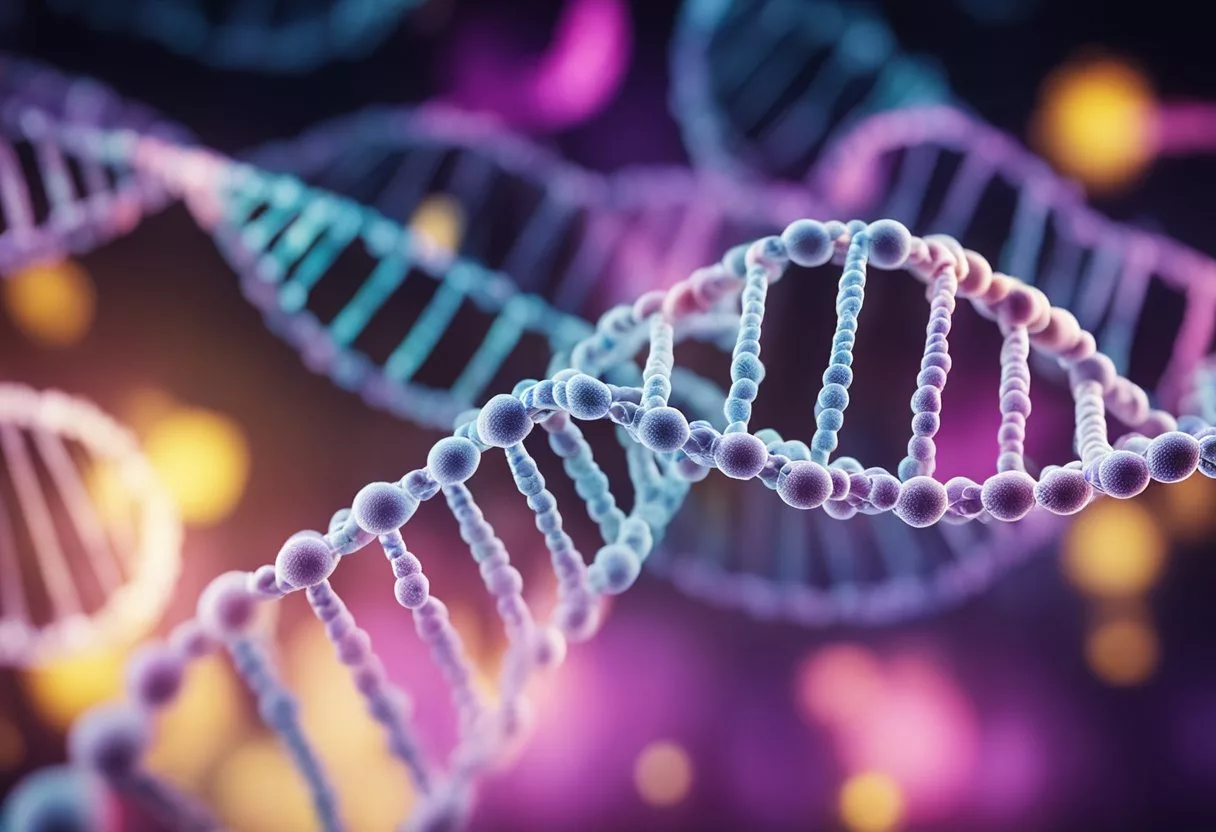
Alterations in DNA methylation can result in either the silencing of tumor suppressor genes or the activation of oncogenes, aiding the uncontrolled growth characteristic of cancer.
Research is increasingly showing that cancer cells often exhibit global hypomethylation of the genome as well as regional hypermethylation at certain gene promoters.
Understanding these epigenetic changes in cancer not only sheds light on the mechanism of cancer development but also opens avenues for new diagnostic and therapeutic strategies.
By targeting specific methylation patterns, there is potential for the development of personalized cancer treatments and improved diagnostic tools, such as using blood-based biomarkers for early detection.
Key Takeaways
- DNA methylation is an essential epigenetic mechanism that influences gene expression and can be altered in cancer.
- Abnormal methylation patterns in cancer cells can lead to the silencing of tumor suppressor genes and activation of oncogenes.
- Research into methylation patterns provides insights for cancer diagnostics and the development of targeted epigenetic therapies.
Basics of DNA Methylation
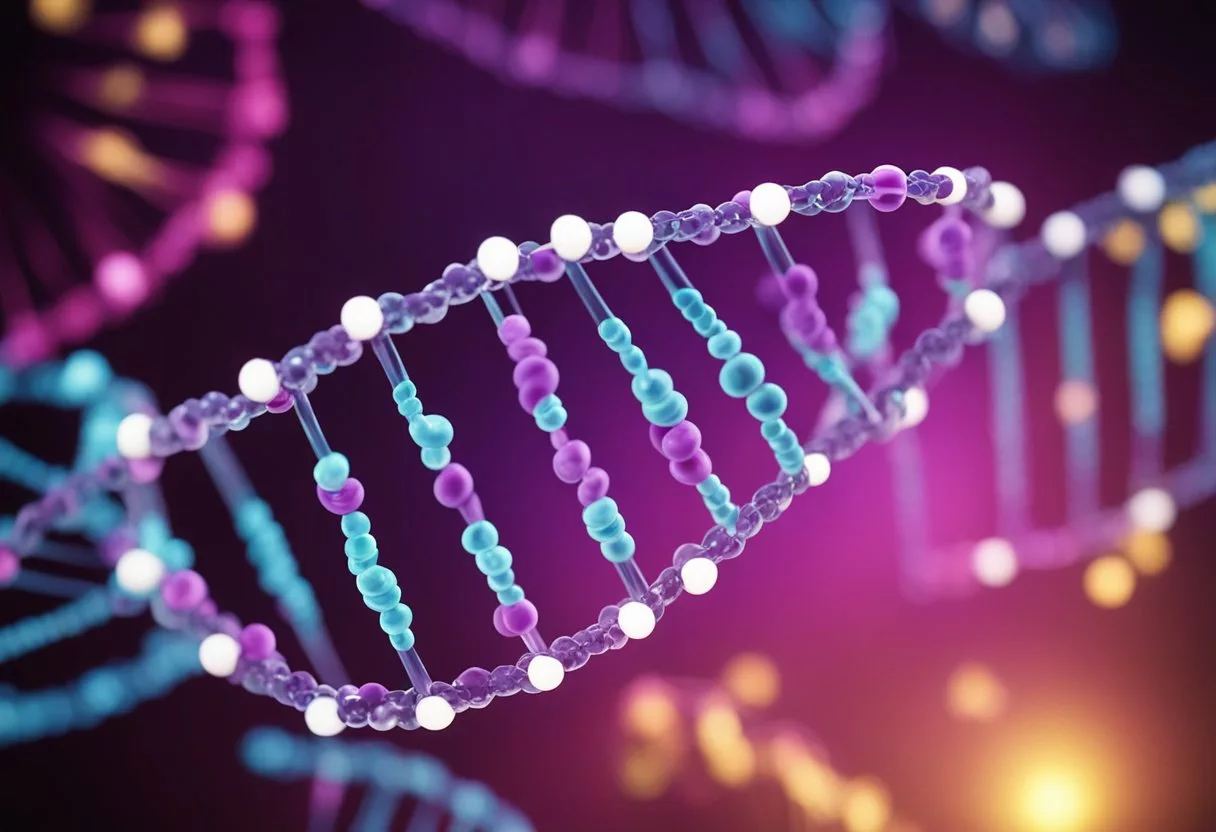
DNA methylation, a crucial epigenetic mechanism, involves the addition of a methyl group to the DNA molecule, typically affecting gene expression without altering the DNA sequence itself.
This modification predominantly occurs at CpG sites, where a cytosine nucleotide is followed by a guanine nucleotide in the DNA sequence.
Genomic Imprinting
Genomic imprinting is an epigenetic phenomenon by which certain genes are expressed in a parent-of-origin specific manner.
It is mediated by DNA methylation patterns that are established during gamete formation and maintained throughout the life of an organism.
These methylation marks are critical, as they regulate the monoallelic expression of a set of genes from only one parent.
X-Chromosome Inactivation
In female mammals, X-chromosome inactivation is an essential process where DNA methylation contributes to the silencing of one of the two X chromosomes, ensuring dosage compensation.
The methylation selectively targets the inactivated X chromosome and helps maintain its silencing over time.
DNA Methyltransferases
DNA methyltransferases (DNMTs) are enzymes responsible for catalyzing the transfer of a methyl group from S-Adenosylmethionine to cytosine residues within DNA.
There are several types of DNMTs, and each type has a specific role in maintaining methylation patterns or establishing new ones.
DNMT1 maintains methylation patterns during DNA replication, while DNMT3A and DNMT3B are involved in the establishment of new methylation marks.
The proper function of DNMTs is vital for maintaining the integrity of the epigenome and ensuring normal cellular function.
Methylation in Cancer Development
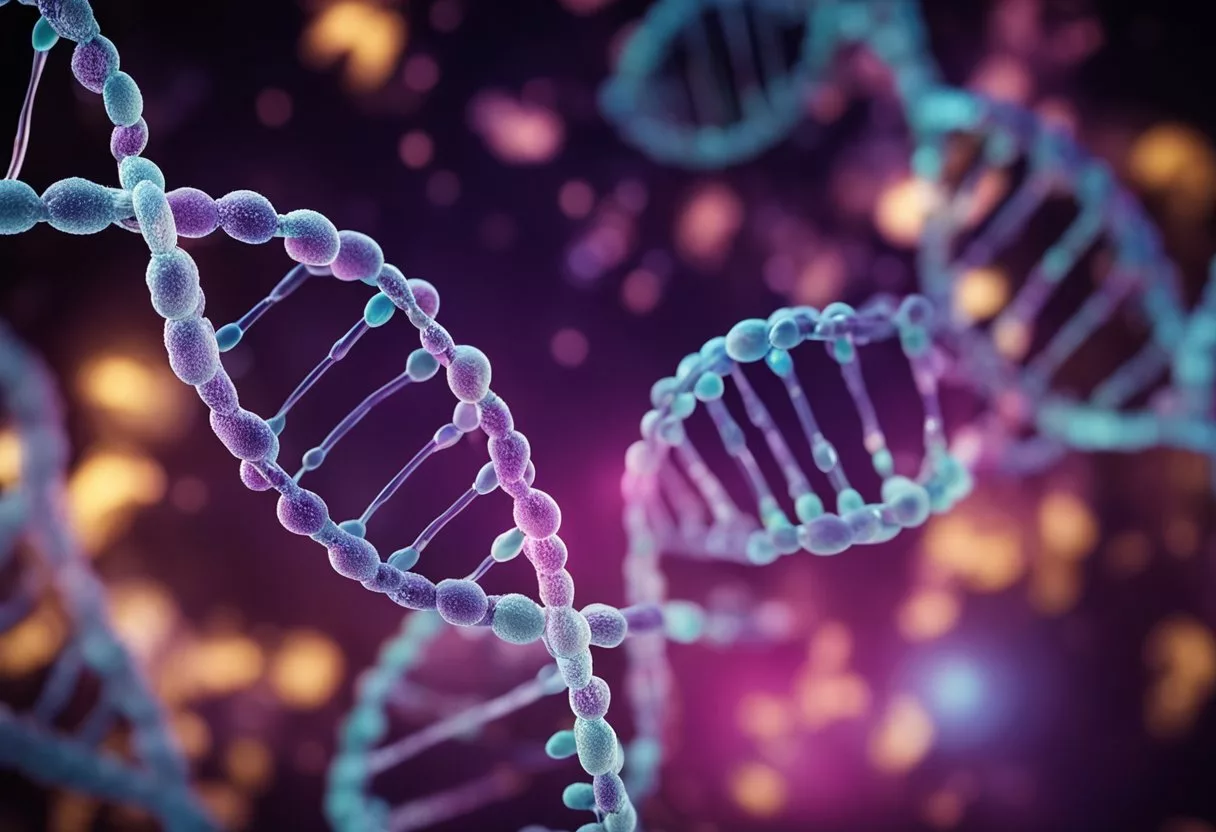
DNA methylation plays a crucial role in gene expression regulation, and its disruption is a key factor in cancer development.
Methylation changes can both activate oncogenes and silence tumor suppressor genes, fostering genomic instability that drives tumorigenesis.
Aberrant Methylation Patterns
Cancer cells often exhibit unusual patterns of DNA methylation.
Aberrant hypermethylation in the promoter regions of tumor suppressor genes can lead to their inactivation, which is a common event in cancer.
Conversely, global hypomethylation can occur in other genomic regions, contributing to chromosomal instability and the activation of oncogenes.
These epigenomic alterations are not merely a result of cancer but are also contributing factors to its onset and progression.
Carcinogenesis
During carcinogenesis, the alteration of DNA methylation patterns is an early and consistent event.
Abnormal methylation affects gene expression, with key genes involved in cell cycle control, apoptosis, and DNA repair being affected.
This leads to a breakdown of normal cellular regulation and fosters an environment in which cancer cells can thrive.
Tumorigenesis
The process of tumorigenesis is complex and involves the interplay between genetic mutations and epigenetic modifications.
DNA methylation changes are among the hallmarks of this process, promoting genomic instability and allowing the clonal expansion of cells with growth advantages.
These cells can accumulate further genetic and epigenetic changes, which can lead to the development of a malignant tumor.
Methylation and Gene Regulation
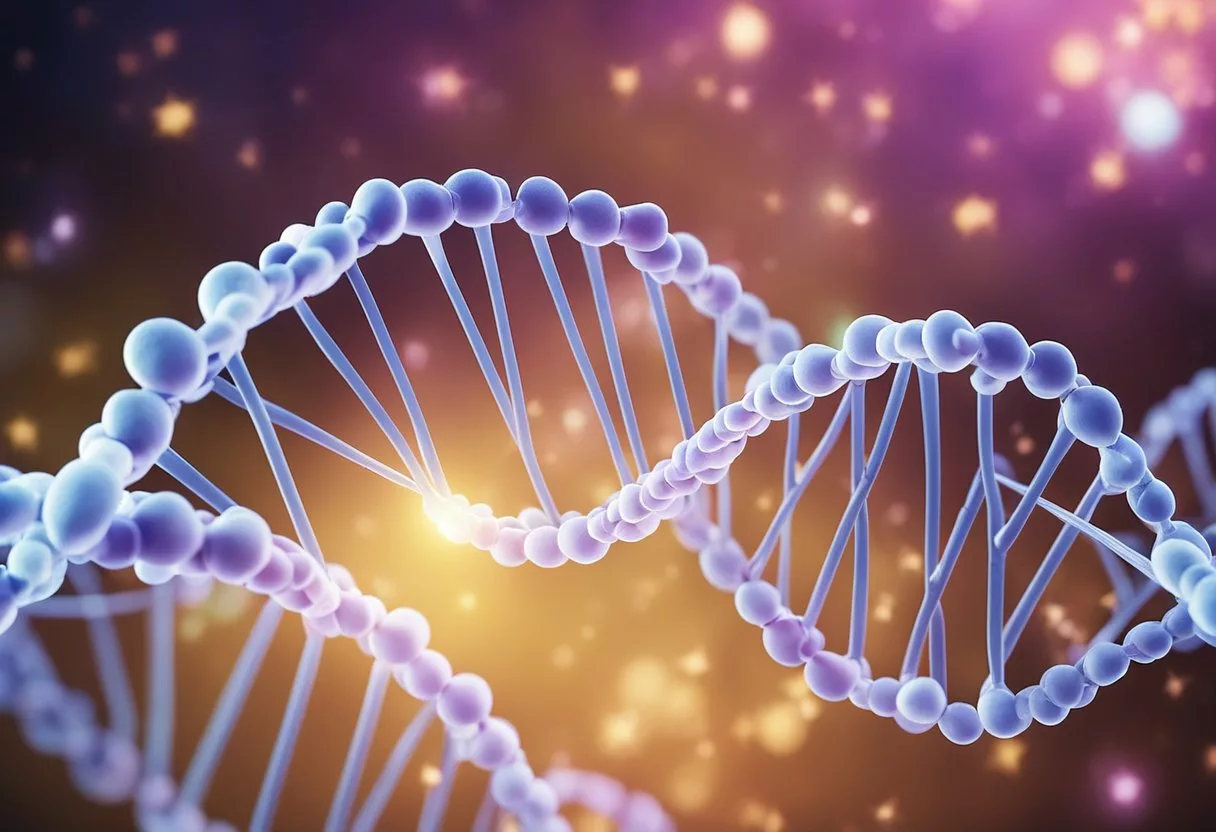
Methylation, particularly DNA methylation, is a form of epigenetic modification that has a profound impact on gene regulation. It plays a vital role in modulating gene expression and maintaining cellular identity.
Transcriptional Regulation
DNA methylation primarily occurs at the cytosine bases within CpG dinucleotides and is carried out by DNA methyltransferases.
This modification can lead to transcriptional silencing when located in gene promoter regions.
Methylated promoters are often associated with repressed gene activity, as methylation can inhibit the binding of transcription factors, thereby reducing the rate of gene transcription.
Gene Bodies and Promoters
The impact of methylation extends beyond promoters. In gene bodies, its role is more complex and context-dependent.
Methylation within the body of a gene might be involved in alternative splicing or in the suppression of cryptic promoters within the genes.
Contrasting with promoter methylation, which is largely inhibitory, gene body methylation can be associated with active transcription under certain circumstances.
Epigenetic Modifications
Epigenetic modifications such as DNA methylation are heritable changes that do not affect the DNA sequence but still have significant effects on gene expression.
Methylation is a key epigenetic mechanism that either promotes or represses gene transcription.
Other modifications, like histone acetylation, usually work in concert with methylation to regulate gene accessibility and activity, orchestrating the cellular epigenetic landscape.
Impact on Cancer Diagnostics and Prognostics

Advances in understanding DNA methylation have significantly enhanced cancer diagnostics and prognostics, offering new tools that may transform patient management.
Biomarkers for Cancer Detection
The identification of diagnostic biomarkers is revolutionizing the way cancer is detected.
Methylation-based biomarkers provide a reliable means for early detection because of their stability and prevalence in the body.
For instance, the presence of methylated genes in circulating tumor DNA can be indicative of cancer even before clinical symptoms arise.
A substantial body of research, including a study titled “The Role of DNA Methylation in Cancer,” supports the use of methylation patterns as robust markers for cancer presence.
Prognostic Value of Methylation Markers
Methylation markers offer not just diagnostic potential but also prognostic value.
These markers can give insight into cancer progression and patient outcomes.
Aberrant methylation patterns are dynamic and continue to evolve throughout the progression of the cancer, providing clues about the stage of the disease and its probable trajectory.
Documented in works like “DNA Methylation as a Diagnostic, Prognostic, and Predictive Biomarker,” there is an opportunity to tailor treatment strategies based on the changing methylation landscape of tumor DNA.
Cancer Specific Methylation Patterns

Cancer-specific methylation patterns serve as critical biomarkers for early detection, diagnosis, and personalized treatment strategies.
Colorectal Cancer Methylation Profile
In colorectal cancer, certain DNA methylation changes have been recognized as informative indicators.
Studies have emphasized the promoter silencing of the MLH1 gene due to hypermethylation, which is involved in mismatch repair and subsequently implicated in tumorigenesis.
This epigenetic alteration is specifically associated with microsatellite instability in colorectal tumors, offering a target for both diagnostic and therapeutic interventions.
Breast Cancer Epigenetic Landscape
The epigenetic landscape of breast tumors reveals significant insights into the varied evolutionary pathways these cancers take.
Key methylation changes include the hypermethylation of the ESR1 gene promoting the loss of estrogen receptor expression, critical in the majority of breast cancers.
These methylation patterns propose an avenue for personalized treatments, particularly in evaluating responses to hormone therapies.
Prostate Cancer and Methylation
Prostate cancer exhibits distinct methylation patterns with potential diagnostic and prognostic significance.
The hypermethylation of the GSTP1 gene emerges as a prominent marker in prostate cancer, reported in over 90% of prostate tumor samples but rarely in benign prostate tissue.
This marker underlines the epigenetic distinctions of prostate cancer cells, aiding in the development of methylation-based tests for early detection and personalized treatment planning.
Epigenetic Therapy and Drug Targets
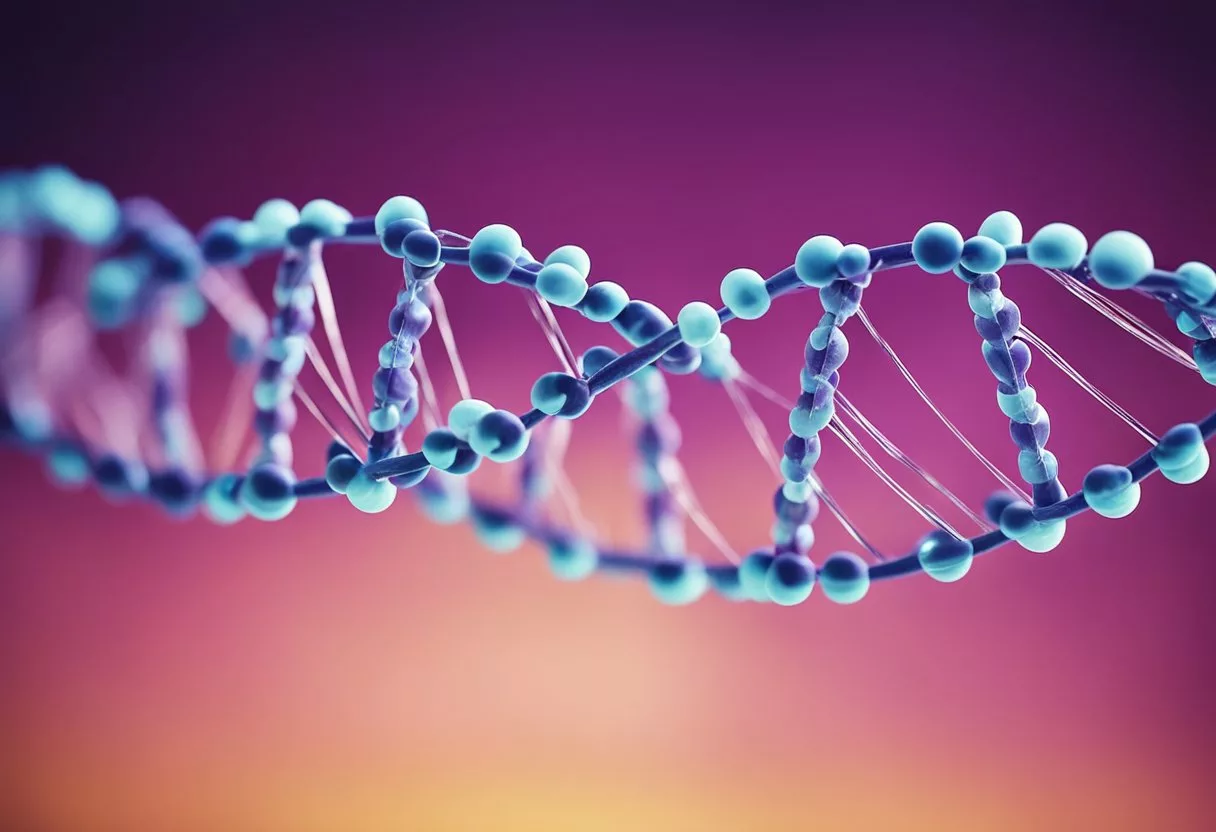
Epigenetic therapy represents a pivotal shift in cancer treatment, focusing on reversing abnormal gene expression patterns without changing the DNA sequence.
Targeted drugs in this domain mediate their effects primarily through the inhibition of enzymes involved in DNA and histone modifications, offering new avenues for cancer therapeutics.
DNA Methyltransferase Inhibitors
DNA Methyltransferase (DNMT) inhibitors constitute a class of epigenetic drugs. They target aberrant methylation patterns often found in cancer cells. These inhibitors are designed to prevent methyl groups from binding to DNA, which can reactivate silenced tumor suppressor genes.
Azacitidine and decitabine are both approved by the FDA. They have shown efficacy in hematological malignancies. Currently, they are under assessment in various clinical trials for their potential in solid tumors.
Histone Modification Drugs
Drugs targeting histone modifications focus on enzymes that alter histone proteins. These alterations affect the accessibility of transcriptional machinery to DNA. This subsection of epigenetic treatments includes histone deacetylase (HDAC) inhibitors and histone methyltransferase (HMT) inhibitors.
Vorinostat, an HDAC inhibitor, has been used in the treatment of cutaneous T-cell lymphoma. Ongoing research assesses the combination of these drugs with chemotherapy and immunotherapy to enhance therapeutic outcomes.
Emerging Epigenetic Treatments
Emerging treatments within epigenetics encompass a range of novel therapeutic strategies. These include drugs that target non-coding RNAs or proteins that recognize specific epigenetic marks.
One innovative approach is the development of multitargeting drugs. These drugs act on both epigenetic enzymes and other cancer-related proteins. They potentially simplify treatment regimens and mitigate drug resistance.
The landscape of epigenetic-targeted therapies continues to evolve. Many drugs are being evaluated in clinical trials. They are poised to complement existing cancer therapies by overcoming drug resistance and enhancing the efficacy of current treatments.
Future Directions and Research

The realm of methylation in cancer research is advancing rapidly. Innovations in detection methods, a deeper understanding of epigenetic changes on immune response, and a growing number of clinical trials aimed at enhancing treatment strategies are taking place.
Novel Methylation Detection Methods
Advancements in Whole-Genome Bisulfite Sequencing (WGBS) are paving the way for comprehensive methylation profiling that far surpasses current capabilities. Researchers are developing enhanced methylation detection technologies that promise higher accuracy and efficiency. These technologies could potentially revolutionize how oncologists approach the diagnosis and monitoring of cancer.
Epigenetic Changes and Immune Response
The interaction between epigenetic changes and the immune response is emerging as a critical aspect in cancer progression and response to therapy. Understanding this relationship provides a promising pathway for new therapeutic approaches, including the development of epigenetic immunomodulators.
Clinical Applications and Trials
Targeted therapies that incorporate insights from epigenetic research are beginning to enter clinical trials. These interventions aim to rectify methylation abnormalities and reprogram the transcriptome to suppress tumor growth.
Ongoing trials are testing these methods for efficacy. Some therapies are demonstrating the potential to substantially shift the landscape of cancer treatment.
Frequently Asked Questions

This section aims to clarify common queries regarding the intricate relationship between DNA methylation patterns and cancer.
How does hypermethylation affect tumor suppressor genes in the context of cancer development?
Hypermethylation often targets tumor suppressor genes, leading to their silencing. This can contribute to uncontrolled cell growth and cancer development.
In what ways can hypomethylation contribute to the progression of cancer?
Hypomethylation in cancer cells may cause genomic instability and the activation of oncogenes. This can facilitate the progression of cancer.
What role does DNA methylation play in cancer therapy and treatment approaches?
DNA methylation patterns can influence the response to certain therapies. They enable personalized treatment plans and the use of DNA methylation inhibitors in oncology.
How can a methylation test be utilized in the diagnosis or prognosis of cancer?
Methylation testing can detect abnormal DNA methylation at early disease stages. This aids in the diagnosis or prognosis of cancer through specific biomarkers.
What is the difference between methylated and unmethylated DNA in cancer cells?
Methylated DNA in cancer cells is associated with gene silencing, whereas unmethylated DNA indicates active gene expression. Both have distinct roles in cancer biology.
What implications does an increase in DNA methylation have on gene expression and oncogenesis?
Increased DNA methylation typically suppresses gene expression. It can lead to the inactivation of tumor suppressor genes, playing a significant role in oncogenesis.